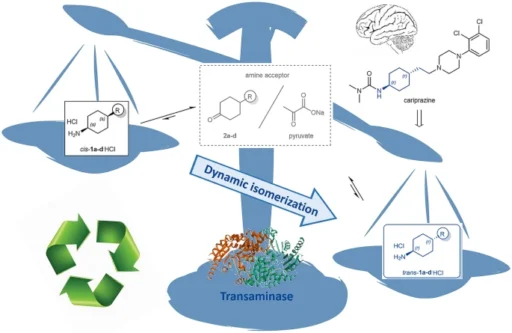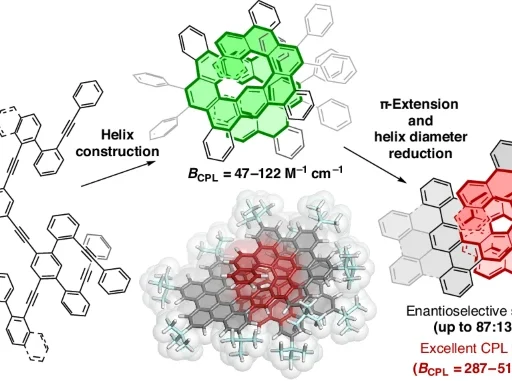Table of Contents
An Overview of Transaminase Catalysis:
Transaminase catalysis is an essential enzymatic mechanism in chemical synthesis to incorporate amino groups into organic compounds. This section explores the precise meaning, importance, and uses of transaminase catalysis in organic chemistry.
Transaminase catalysis is a process where amino groups are transferred from donor molecules to acceptor molecules, leading to the creation of new amine compounds. Transaminase enzymes facilitate these processes by serving as catalysts. The key benefit of transaminase-catalysis is that it can speed up reactions in mild conditions, be very selective, and work with many different types of functional groups. These properties make transaminase-catalysis a highly desirable technique for producing intricate chemical molecules.
The dynamic isomerization of cis- to trans-1a-d catalyzed by a single transaminase:
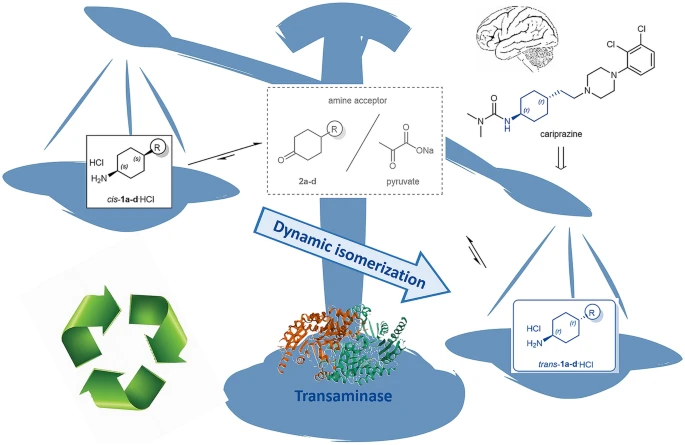
Comprehension of trans-4-substituted cyclohexane-1-amines:
There is a separate group of chemicals called trans-4-substituted cyclohexane-1-amines. They have a cyclohexane ring with a substituent at the 4-position and an amino group at the 1-position. In this section, we’ll talk about the structure and important role of trans-4-substituted cyclohexane-1-amines as important chemicals in chemical synthesis.
The structural arrangement of trans-4-substituted cyclohexane-1-amines makes them suitable for use in a variety of synthesis routes. They are essential components in the production of medicines, agrochemicals, and fine chemicals. Understanding the intricate structural details of these substances is critical for developing effective synthesis methods and utilizing their capabilities in a variety of applications.
Role of Transaminase in Amine Synthesis:
Transaminases, which are enzymes, have a crucial function in promoting the production of amines through processes mediated by transaminases. The next part goes into detail about how transaminase-catalyzed reactions work, including what kinds of substrates the enzyme can react with.
The ping-pong process of transaminase-catalyzed reactions forms a covalent intermediate between the enzyme and the amino group donor. The amino group is then transferred to the acceptor molecule, forming a new amine complex. The structural characteristics of the enzyme’s active site and the molecular interactions between the enzyme and its substrate dictate the substrate specificity of transaminases. Transaminase catalysis possesses a wide range of substrate specificity, allowing it to effectively handle various amino donors and acceptors. This feature makes them highly useful in the field of organic synthesis.
Preliminary screening for diastereotope selective amination of the ketone 2a-d with immobilized whole-cell forms of three (R)-selective and three (S)-selective transaminases in batch mode:
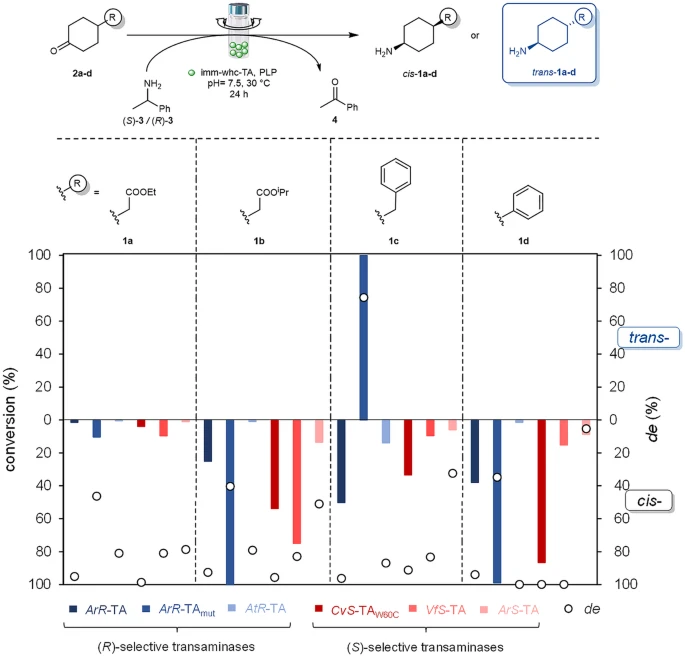
Cariprazine Production Analysis: A Comprehensive Examination
Cariprazine, an antipsychotic medication, is an excellent example that demonstrates the importance of transaminase-catalyzed synthesis in the production of pharmaceuticals. This section provides a summary of the cariprazine synthesis process, with a focus on highlighting the significance of trans-4-substituted cyclohexane-1-amines as critical components in the synthesis pathway.
Cariprazine demonstrates partial agonism at dopamine D2 and D3 receptors, as well as serotonin 5-HT1A receptors, making it an effective treatment for schizophrenia and bipolar disorder. The process of making cariprazine involves joining a substituted pyrrole with a substituted cyclohexanone. Next, an amino group is added to the 1-position of the cyclohexane ring using transaminase-catalysis amination. This synthesis pathway highlights the crucial importance of transaminase catalysis in obtaining structurally intricate and medically important molecules.
The synthesis of the key intermediate of cariprazine:
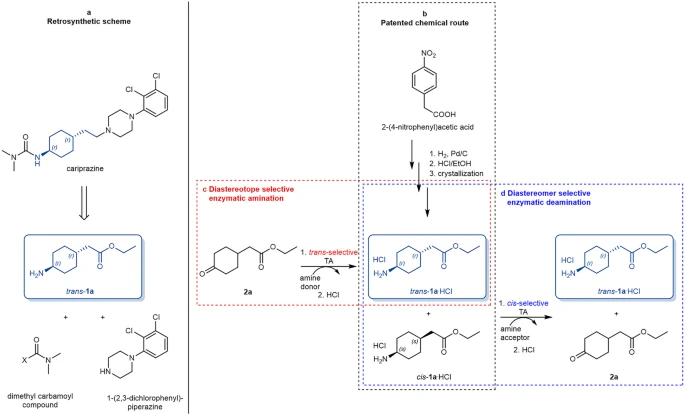
Recent Advances in Transaminase-Catalyzed Synthesis:
In recent years, there have been notable progressions in the field of transaminase-catalysis synthesis, which have created new opportunities for synthetic chemistry and biocatalysis. This section focuses on significant advancements in the field of transaminase-catalyzed synthesis and investigates new applications that go beyond cariprazine synthesis.
Advances in transaminase engineering and enzyme immobilization techniques have improved the efficiency and variety of transaminase-catalyzed reactions. Researchers have used protein engineering and directed evolution technologies to produce engineered transaminase variants that exhibit enhanced catalytic activity and selectivity. Recent advancements have expanded the range of transaminase-catalysis synthesis, allowing for the efficient production of various amine compounds with precise control over their stereochemistry. In addition, transaminase-catalysis has been utilized in several fields, such as the manufacturing of high-quality chemicals, agricultural chemicals, and specific components used in organic synthesis.
Obstacles and Prospects for the Future:
Although there have been significant advancements in transaminase-catalysis synthesis, there are still several obstacles that remain, requiring continuous research endeavors to overcome them. This section analyzes the existing constraints of transaminase catalysis and delineates prospective directions for future research and advancement.
The restricted range of substances that current enzymes can use as substrates, the instability of enzymes in reaction conditions, and the need for enhanced efficiency and scalability of the reaction are the main obstacles in transaminase-catalysis synthesis. To overcome these problems, a multidisciplinary strategy is necessary, which involves enzyme engineering, substrate screening, and process optimization. Researchers will probably focus on making transaminases work with more substances, making the enzymes more stable and effective, and coming up with new biocatalytic ways to make chemicals in a way that doesn’t harm the environment.
Diastereomer selective deamination from the cis/trans–1a-d mixtures catalyzed by immobilized CvS-TAW60C in continuous-flow mode:
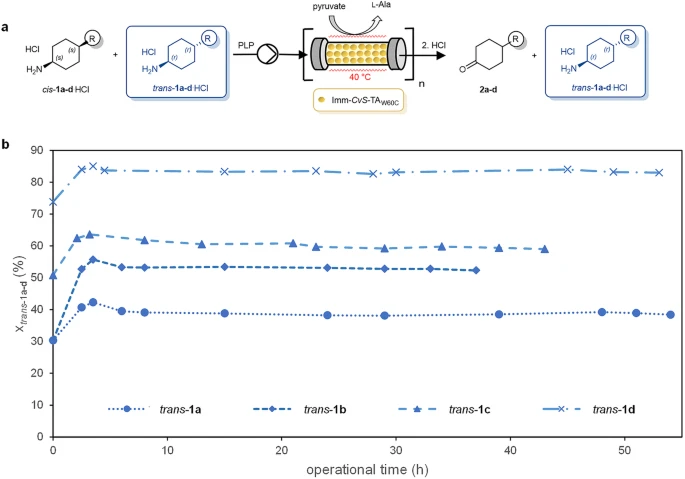
In conclusion:
Overall, transaminase-catalysis is a very effective and flexible method for synthesizing amines, providing several benefits compared to conventional chemical techniques. The production of trans-4-substituted cyclohexane-1-amines, which are important in the synthesis of cariprazine, demonstrates the importance of transaminase catalysis in the field of pharmaceutical synthesis. The latest progress in transaminase-catalysis synthesis has increased the number of tools that can be used for synthesis. This makes it easier to make different amine molecules in a way that is both effective and safe for the environment. In the future, ongoing research and innovation in transaminase catalysis have the potential to greatly transform organic synthesis and biocatalysis.
Frequently Asked Questions:
1). What is transaminase-catalysis, and how does it contribute to organic synthesis?
Transaminase-catalysis is the process by which transaminase enzymes speed up chemical reactions by moving amino groups from one molecule to another. This enzymatic activity is critical in organic synthesis because it enables the formation of new carbon-nitrogen bonds, which are essential for the production of various organic compounds.
Transaminase-catalysis is an enzyme process that facilitates the incorporation of amino groups into organic molecules, thereby allowing for the creation of a wide range of amine compounds. It provides numerous benefits, such as excellent specificity, gentle reaction conditions, and the ability to work well with different functional groups, which makes it a significant asset in organic synthesis.
2). What are trans-4-substituted cyclohexane-1-amines, and why are they important?
Trans-4-substituted cyclohexane-1-amines are chemical compounds with a substituent attached to the fourth carbon atom in a cyclohexane ring and an amino group attached to the first carbon atom. These compounds are significant due to their potential applications in various fields, such as pharmaceuticals, materials science, and organic synthesis.
There is a cyclohexane ring with a substituent at the 4th position and an amino group at the 1st position in trans-4-substituted cyclohexane-1-amines. These compounds have a crucial role in the production of medicines, agrochemicals, and fine chemicals, underscoring their importance in organic synthesis.
3). How do transaminases facilitate amine synthesis, and what factors influence their activity?
Transaminases play a role in the amine synthesis process. They facilitate this process by transferring an amino group from an amino acid to a keto acid, resulting in the formation of a new amino acid. Several factors can influence the activity of transaminases, including pH, temperature, substrate concentration, and the presence of cofactors or inhibitors.
The movement of amino groups from donor molecules to acceptor molecules is made easier by transaminases. This makes new amine compounds. Factors such as enzyme specificity, substrate specificity, and reaction circumstances affect transaminase activity.
Cariprazine is a pharmaceutical compound. It is manufactured via a process called transaminase catalysis.
4). What is cariprazine, and how is it synthesized using transaminase-catalysis
Pharmacological agents use cariprazine as an antipsychotic medication to manage schizophrenia and bipolar disorder. The compound is produced using transaminase catalysis, where a substituted pyrrole is condensed with a substituted cyclohexanone. Transaminase-catalyzed amination follows, introducing the amino group at the 1-position of the cyclohexane ring.
5). What are the potential uses for transaminases in synthesis in the future?
The potential for innovation and improvement in organic synthesis and biocatalysis is great for the future of transaminase-catalyzed synthesis. Future research endeavors will prioritize expanding the range of materials that transaminases may work with, improving the stability and efficiency of the enzyme, and creating new methods for sustainable chemical synthesis via biocatalysis.
For more chemistry blogs, visit chemistry Master

